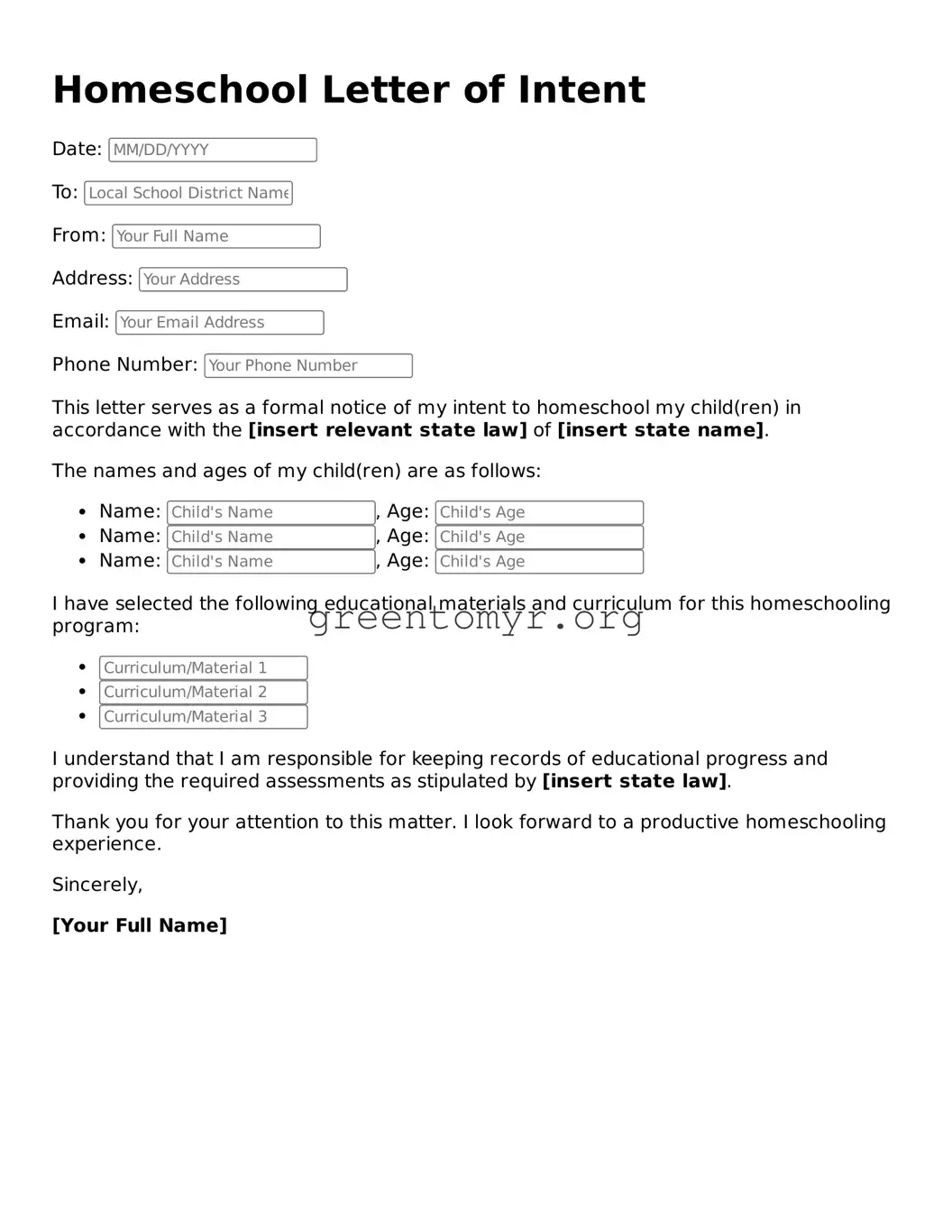Filling out the Homeschool Letter of Intent form can be a straightforward task, but many people make common mistakes that can lead to complications down the road. Avoiding these pitfalls is key to a smooth homeschooling experience. Here are eight mistakes often seen when parents complete this important document.
One prevalent mistake is not including all required information. Often, parents overlook sections or forget to provide their child's full name, date of birth, or other key details. It’s crucial to read the form carefully and ensure that every piece of required information is complete. Omitting even one detail can delay the approval process.
Another frequent error is using outdated forms. Forms can change over time, and it’s important to ensure you are using the most current version. Check the state’s education department website for the latest requirements before you begin. Submitting an older version might lead to unnecessary rejection or requests for further information.
Some parents also tend to neglect state-specific guidelines. Every state has its own laws regarding homeschooling, and they may vary significantly. Familiarize yourself with your state’s requirements before filling out the form. Ignoring these unique rules can cause complications in the approval process.
A common oversight is failing to sign and date the form. This might seem trivial, but without a signature, the form is incomplete. It’s a simple step that many forget, leading to delays. Ensure that you double-check for necessary signatures before submission.
Additionally, some individuals incorrectly assume that the form is optional. This could not be further from the truth in many states, where submission of the intent form is a legal requirement to begin homeschooling. It’s essential to understand your state’s laws about this requirement to avoid legal issues later on.
Another mistake is submitting the form late. Each state has a deadline for when the letter of intent must be submitted. Missing this deadline can result in the inability to homeschool for the year. Set a reminder to complete this task promptly.
Sometimes, parents may file multiple letters of intent for the same child, thinking it guarantees their approval. This could create confusion and may lead to negative consequences. It’s best to submit one clearly stated letter of intent to avoid misunderstandings with the local school district.
Lastly, some people forget to keep a copy of the submitted form. Keeping records is essential, especially if any questions arise later. Always make a photocopy or save a digital version of your submission for your records. This way, you have proof of your intent and can refer back to it if needed.
By taking the time to avoid these common mistakes, you can make the process of completing your Homeschool Letter of Intent smoother and more effective. With careful preparation, you’ll be well on your way to embarking on your homeschooling journey.
